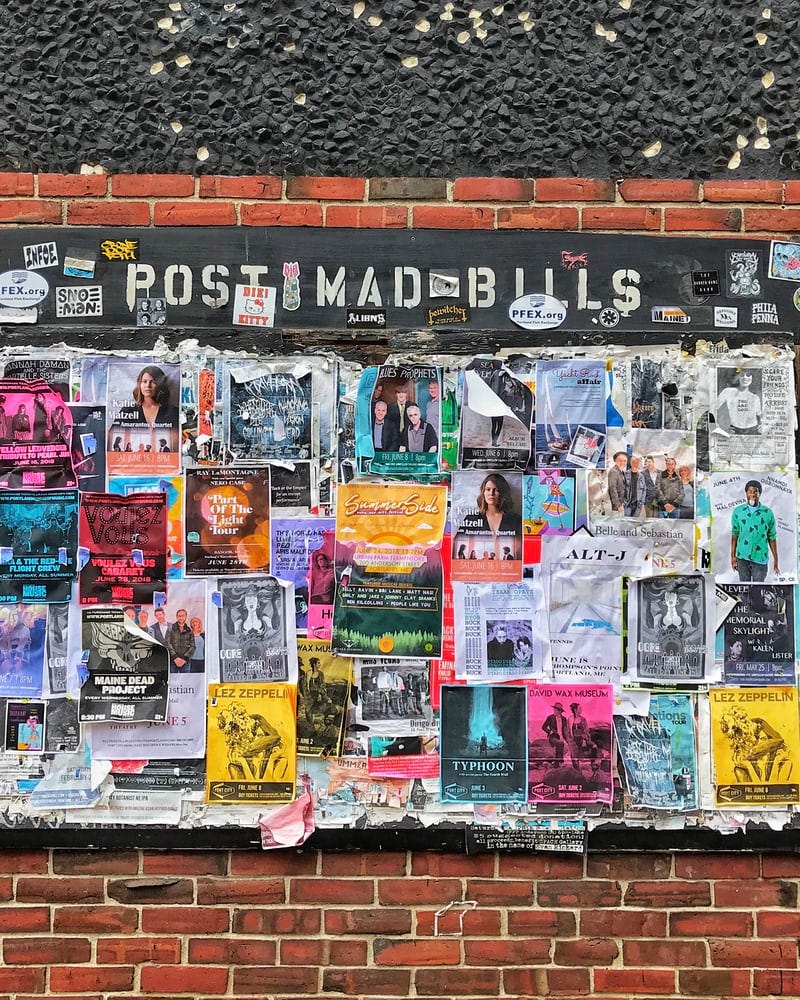In this day in age as digitally savvy consumers and users, ads are one of the most annoying pesky things in this world and there’s no real consensus on how to get rid of them.
They are little ants laying under a brick. You pick up one side of the brick, you find thousands. On the other side, you find a village with even more.
Ads make up a majority of revenue for advertisers, marketers and companies. Without our eyeballs glued to our addictive screens all day, they wouldn’t be nearly as successful.
Remember when ads were only shown on TV and you would actually need to call the number at the bottom of your screen to order that heat compressor and if you buy 1, you get 6 more for free, not including shipping?
Ads have clearly evolved. My grandma hasn’t even heard of the word ads. She calls them commercials.

Tuesday Turmoil
Although consumers were set free this past Tuesday on their morning coffee run, companies were scrambling.
On the 8th of June, there was a slowdown and glitch for up to an hour on various websites such as CNN, the BBC, Hulu, HBO Max, and many more which were completely down.
One hour offline may not sound like a lot, but it can easily translate to millions of dollars in lost advertising revenue and e-commerce for affected sites.
After all, since we are the product, what frightens the advertiser, frees us.
As a result, ads are everywhere and that sign of relief you got at the crack of dawn on Tuesday surely didn’t last long.
Now back to shaving cream and the overpriced artificial watch you were glazing on another device back on your phone.
What Is Advertising?
Advertising is the promise of improving your life.
Yet we usually don’t need more stuff and have what we need.
Most marketers are liars and great salespeople.
Back in the 80s, people saw an average of 50 ads per day. Now that number has jumped tenfold to 10k ads per day. Most people don’t realize how many they are seeing or glancing at.
Facebook serves up hundreds of billions of ads per day.
Instead of being the product, we should be the customer. No wonder we are burnout by toxic sites.
Being identically profiled, tracked, snooped and stalked is scary and these algorithms have become hidden to look inside of us from all angles.

Haunted Ads
Ads are not only creepy as they are identical to what you searched for in a browser on another device or sometimes pondering about, they are designed to follow you around everywhere.
Online ads have only gotten worse by the years. When you simply shop for something, a few websites later the item is following you everywhere. It’s popping up on Instagram, to loading on your Facebook feed to the sidebar of wikipedia.
Even if you end up purchasing the time, they will still recommend more. Just like banks, they don’t care if you can’t afford it. That’s your problem to figure out.
Besides the annoying factor, they can be dangerous. Tracking technologies such as web cookies collect information about your browsing activities sending it to tech companies and telemarketers to compile that data to target us across all our devices.
It raises massive privacy concerns that are only getting worse.
A 2012 survey by Pew Research Center found that 68 percent of internet users did not like targeted advertising because they do not like having their online behavior tracked and analyzed.
They are so sophisticated that they know what we want and what confirms our bias so we only see what we want to see to keep coming back.
If you’re a republican, you will only Trump/GOP/Texas related political statements and commentary on your feed. Rarely anything about The House or the current president since you wouldn’t want to use the platform.
In essence, the ad industry has become powerful and is the easiest way for targeted ads to chase you down instead of blasting commercials on your screen. Plus, who has a TV anymore?
Fortunately, you’re in good hands! There are several ways to banish these pesky ads besides disabling cookies, using a different computer or not using social media:
-Clear Your cookies Often
Apple, Google and Microsoft have published instructions on how to clear data for their browsers Safari, Chrome and Edge.
-Reset your Advertising ID
In addition to cookies, Android and Apple phones use a so-called advertising ID to help marketers track you. You can reset it whenever you want. On Android devices, you can find the reset button in the ads menu inside the Google settings app, and on iPhones, you can find the reset button inside the settings app in the privacy menu, under advertising.
-Reset Your God Ad history
Google offers the My Activity tool, myactivity.google.com, where you can take a deep look at the data that Google has stored about you, including the history of ads you have loaded, and choose the data you want to delete.
-Hide Annoying Ads
Simply click on the minimize or x at the top right corner of the ad but it’s nt guarnatteed to close another time
-Install an ad blocker:
For your web browser, you can install add-ons that block ads. My favorite one for computer browsers is uBlock Origin, and on iPhones I recommend 1Blocker X. (For Android users, Google banned many ad blockers from its official Play app store, so the simplest way to block ads is by using a private web browser.)
-Use A Private Browser
-Install a Track Blocker
Tracker blockers detect snoopy code on websites and prevent them from loading. My favorite tracker blocker for desktop and mobile systems is Disconnect.me

The Future
Fingers crossed it’s ad free. Ad-based platforms such as Facebook and Instagram are flooded with ads but more and more people of all ages are growing wary of privacy invasion and these addiction algorithms that steal and sell their data.
More nations are adopting ad-protection. policies and Apple announced in their developer conference earlier this week they are restricting transmission of user’s IP addresses to be sent to 3rd parties and marketers. In addition, email addresses will be harder to track and trace, a core product for sellers to find loyal customers and annoy the heck out of customers infiltrating their promotions folder.
The internet uses us instead of us using them since the most popular products from Google search to Facebook are free so we are the product not the customer.
Ad-Free Internet in 5 Easy Steps:
Along with following the practices above, these free plugins, software and apps below take less than 3 minutes to execute and will save you thousands of hours and dollars off of your life.
1. Download uBlockOrigin
2. Download Ghostery
Ghostery specifically focuses on blocking trackers.
3. Use an Anonymous Browser
If you’re serious about protecting your data from ad trackers, consider switching from Google-owned Chrome or Apple-owned Safari to an anonymous browser that doesn’t track your clicks or record your history.
4. Epic
Epic is “a private, secure web browser that blocks ads, trackers, fingerprinting, crypto mining, ultrasound signaling, and more.” It stops 600+ ad-tracking attempts in an average browsing session and has the option to turn on network privacy with a free built-in VPN with servers in eight countries.
5. Use an Anonymous Search Engine
The leading player is: DuckDuckGo. Other options include Qwant, Gibiru, SwissCows, or SearchEncrypt. Google is not your friend.
Make the web an enjoyable controlled place.
Make this decision now to get back your time and wallet later.
You’ll thank me later.

